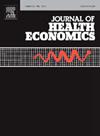寿命、教育和收入:三角形有多大?
IF 3.6
2区 经济学
Q1 ECONOMICS
引用次数: 0
摘要
虽然健康通过多种途径影响经济发展和福祉,但通常提出的一种途径是“地平线”机制,即寿命的延长促使人们接受额外的教育。最近的一篇文献非常关注教育对寿命延长的影响,而这项研究则询问了这一特定渠道对幸福(福利)的影响。我注意到,死亡就像对人力资本投资征税,这建议使用入门经济学的标准工具:三角形。我估计当教育调整到较低的成人死亡率时,再优化的(三角)收益。即使教育对生存差异的反应大得令人难以置信,如果立即切换到日本的生存曲线,几乎所有今天人类发展水平较低的国家,这一渠道的价值也不到收入的3%。(与此形成对比的是,即使教育水平固定,他们也会获得40%的“矩形”收益。)我用充分确定的研究来校准模型,发现典型低收入国家的地平线三角形不到一生收入的百分之一。本文章由计算机程序翻译,如有差异,请以英文原文为准。
Longevity, Education, and Income: How large is the triangle?
While health affects economic development and wellbeing through a variety of pathways, one commonly suggested channel is a “horizon” mechanism in which increased longevity induces additional education. A recent literature devotes much attention to how much education responds to increasing longevity, while this study asks instead what impact this specific channel has on wellbeing (welfare). I note that death is like a tax on human-capital investments, which suggests using a standard tool of introductory economics: triangles. I estimate the (triangular) gain from reoptimization when education adjusts to lower adult mortality. Even for implausibly large responses of education to survival differences, almost all of today’s low-human-development countries, if switched instantaneously to Japan’s survival curve, would place a value on this channel of less than 3% of income. (This contrasts with a 40% ‘rectangle’ that they would gain even if education were held fixed.) Calibrating the model instead with well identified studies, I find that the horizon triangle for the typical low-income country is less than a percent of lifetime income.
求助全文
通过发布文献求助,成功后即可免费获取论文全文。
去求助
来源期刊

Journal of Health Economics
医学-卫生保健
CiteScore
6.10
自引率
2.90%
发文量
96
审稿时长
49 days
期刊介绍:
This journal seeks articles related to the economics of health and medical care. Its scope will include the following topics:
Production and supply of health services;
Demand and utilization of health services;
Financing of health services;
Determinants of health, including investments in health and risky health behaviors;
Economic consequences of ill-health;
Behavioral models of demanders, suppliers and other health care agencies;
Evaluation of policy interventions that yield economic insights;
Efficiency and distributional aspects of health policy;
and such other topics as the Editors may deem appropriate.
 求助内容:
求助内容: 应助结果提醒方式:
应助结果提醒方式:


